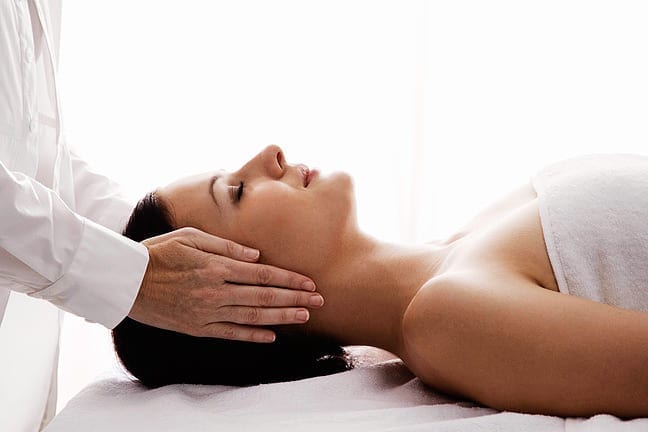The Basics: Reiki, meaning “the free passage of universal life energy,” is a Japanese alternative healing practice based on the transference of energy from person to person. During a session, a trained Reiki practitioner places hands on or slightly above a client to transfer positive energy, which supports the body’s own healing processes.“Reiki helps balance the mind, body and spirit, and encourage a sense of wellness,” says Kimberly Fleisher, a Reiki Master and director of The Reiki School + Clinic in Philadelphia, Pennsylvania. “It creates a space for someone to engage their own inner resources and press their own reset button.”A Reiki session does not involve diagnosis, so you won’t experience a treatment entirely tailored to your specific health concern. “Regardless of symptoms, Reiki treats the whole body,” says Fleisher. “As [Reiki teacher and author] Pamela Miles says, ‘Reiki doesn’t treat disease, it treats people.’”A typical Reiki session takes place on a massage table, where the client remains fully clothed. A Reiki practitioner stands beside the table and begins with lightly touching the client’s head, continuing a series of hand positions down the body, spending several minutes on each area. An average session lasts 45 to 60 minutes.If you’re coping with an illness or stress, Reiki sessions on a daily basis or several times a week can be beneficial. Once balance has been restored, Reiki works preventatively and can be practiced monthly or every six weeks. You can also train to self-practice Reiki.Scientific Support: Whether Reiki actually provides healing energy or works through relaxing touch isn’t known. But there is some research on the alternative therapy’s healing potential. A 2010 International Journal of Behavioral Medicine study of biofield therapies including Reiki found strong evidence that the treatments reduce pain in the general population and moderate evidence of pain reduction in hospitalized and cancer patients.The study also suggested that these therapies ease anxiety and agitation in those with dementia. Another 2010 study published in the Journal of the American College of Cardiology found that Reiki improved the emotional state of patients and increased heart rate variability—a stress recovery measure—in patients hospitalized with acute coronary syndrome, a heart problem marked by chest pain due to reduced blood flow to the heart.Complement to Western Medicine: With no known contraindications and no diagnosis involved, Reiki is a promising complementary practice for patients receiving Western treatments. Reiki has the potential to strengthen the body’s innate healing ability, without causing interference. “Reiki tends to make patients undergoing conventional treatments more apt to receive those treatments,” says Fleisher. “They’re better able follow the protocol, less stressed about invasive procedures and more peaceful pre- and post-surgery.” According to The National Center for Complementary and Alternative Medicine, there are currently no licensing standards for Reiki, and techniques can vary greatly. Those interested in Reiki should seek out a practitioner recommended by a friend, family member or health care provider.What it’s Best For: Reiki treats a person’s whole self, and it is balancing for a person’s whole being. Physical or emotional stress can be eased with Reiki treatment. “Clients report that Reiki helps them with centeredness, calmness and feelings of peace and wellbeing,” says Fleisher. “Patients report that Reiki helps reduce nausea, pain, anxiety and fatigue, and increase a sense of wellness and freedom.”The Beauty Connection: Reiki treatment can help you feel whole, well and balanced inside, which can have a visible effect on your outer beauty. “Reiki as a practice helps you feel better about yourself,” says Fleisher. “When we feel good internally, it reflects externally.” And the beautifying effects of Reiki are not limited to those in optimal health. “You can have an internal and external reflection of wellness even while you are living with an illness,” she says.
© YouBeauty 2024




































